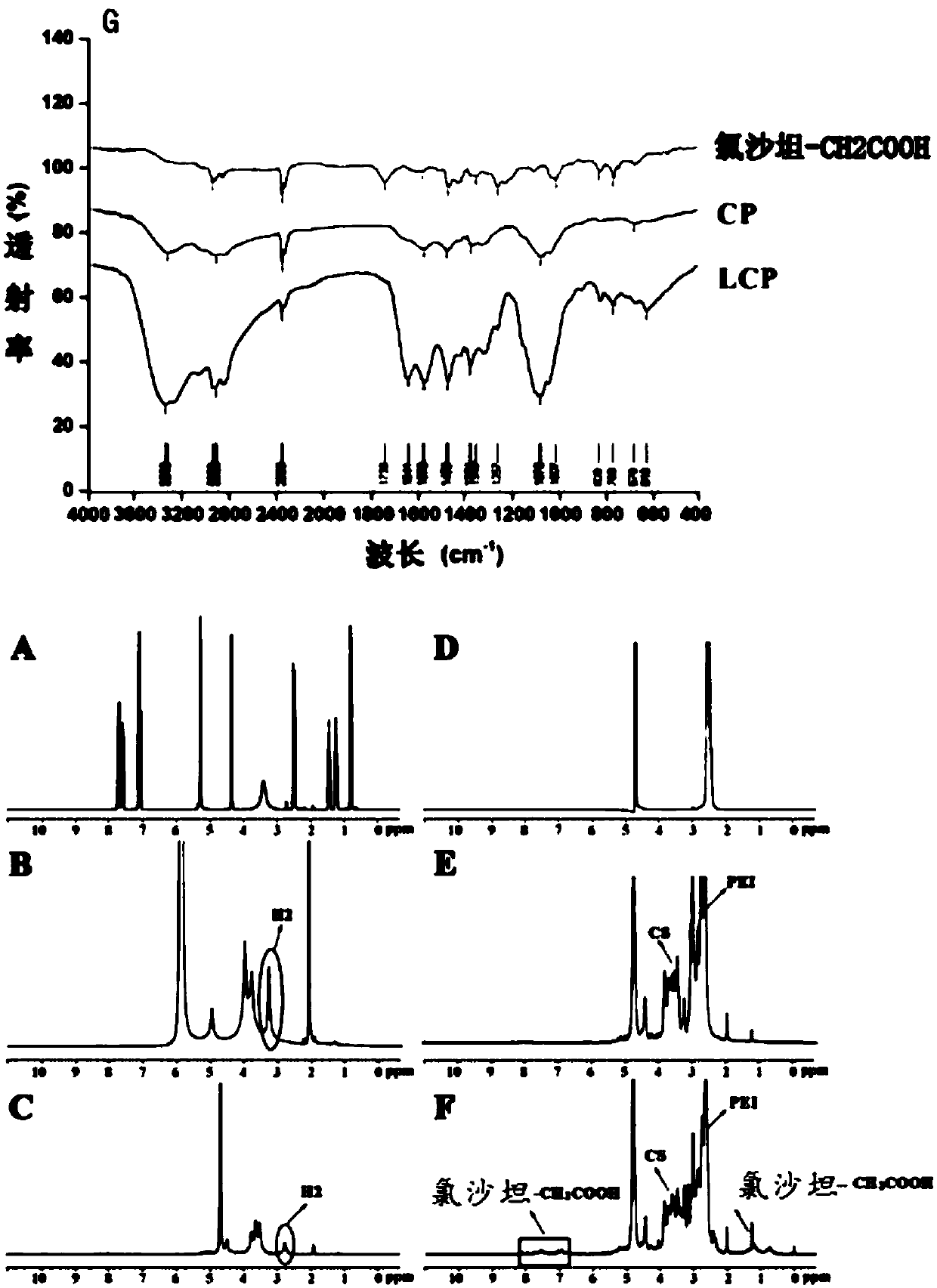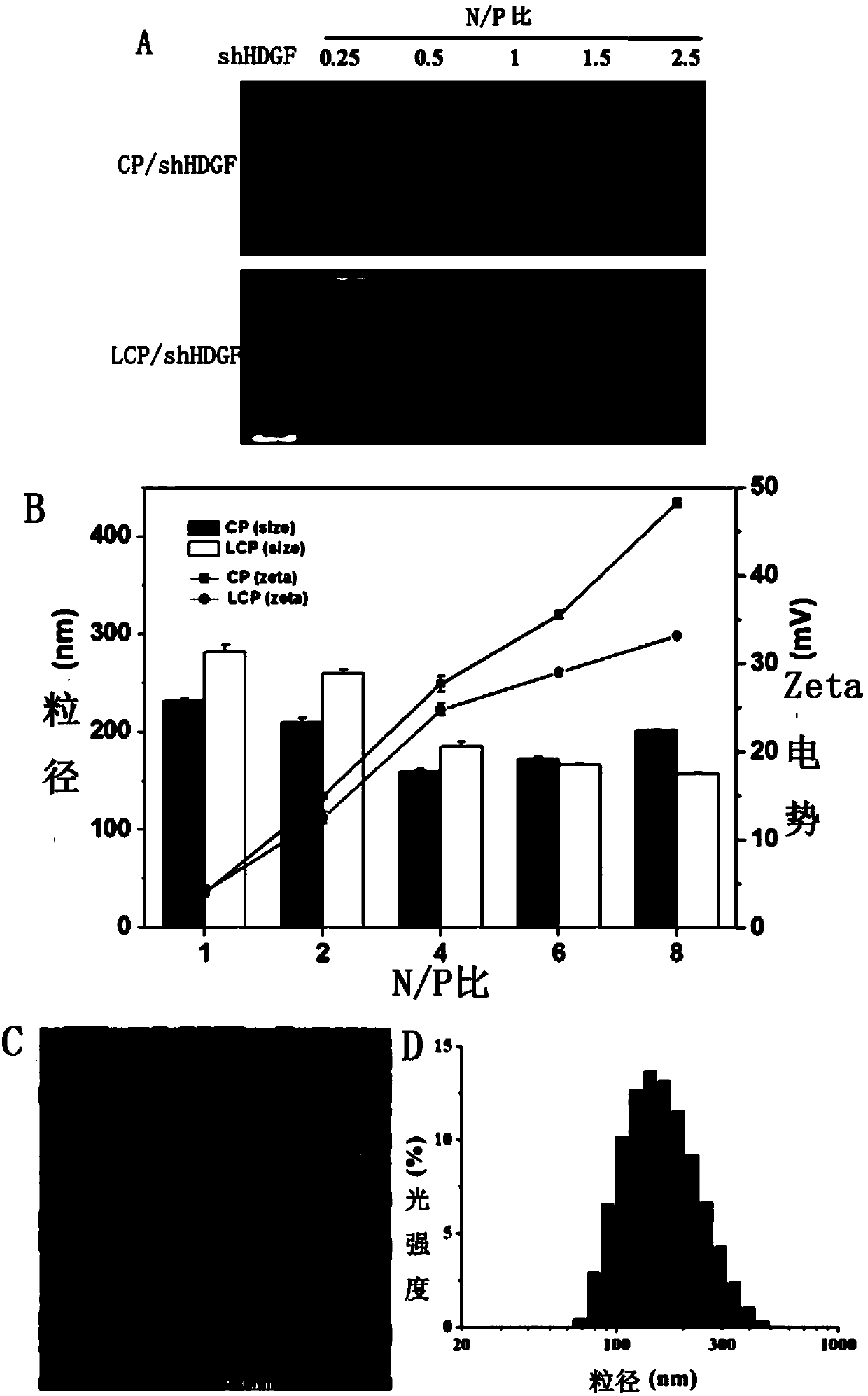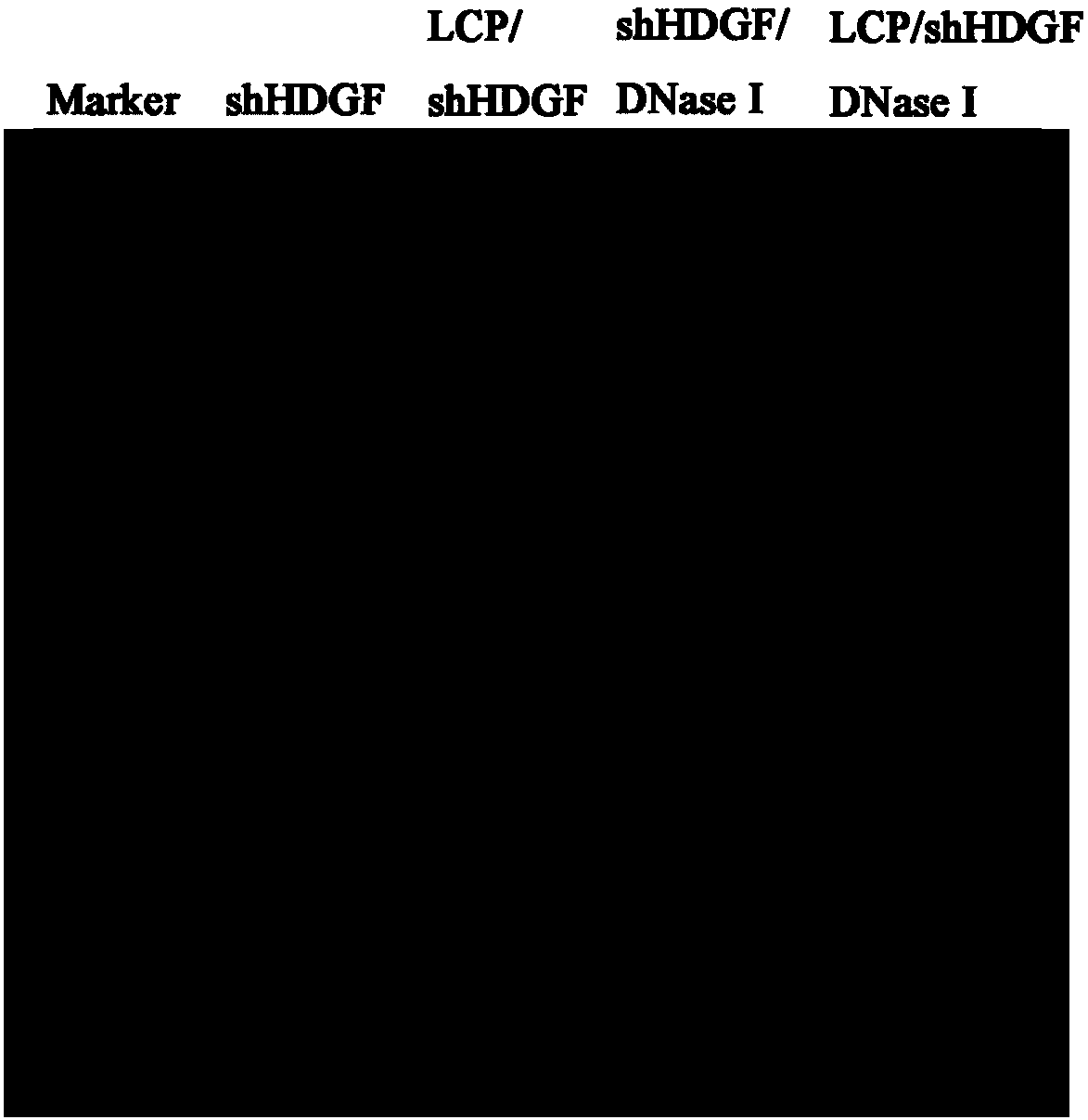Glioma-targeting composite nanometer preparation, preparation method and applications thereof
A nano-formulation, glioma technology
- Summary
- Abstract
- Description
- Claims
- Application Information
AI Technical Summary
Problems solved by technology
Method used
Image
Examples
Embodiment 1
[0036] The synthesis of embodiment 1 carrier material LCP
[0037] ①Synthesis of CP copolymer: Dissolve chitosan and potassium periodate in pH 4.5 acetic acid / sodium acetate buffer respectively, mix the two solutions, and react with gentle stirring at 4°C under nitrogen protection. After 48 hours, add ethyl alcohol Diol (10%, v / v) continued to stir for 30 min. After the reaction was terminated, small molecular impurities were removed by dialysis bag method, and freeze-dried to obtain oxidized chitosan (O-CS), which was stored at -20°C.
[0038] ②Weigh an appropriate amount of O-CS and dissolve it in water, mix it with PEI (molecular weight 1.8k), and stir gently at 4°C under nitrogen protection. After reacting for 48 hours, add boron dissolved in sodium hydroxide into the reaction bottle three times. Sodium hydride, continue under nitrogen protection, stir at room temperature, take out the liquid after 12 hours of reaction, use dialysis (molecular weight cut-off 3.5kDa) to dia...
Embodiment 2
[0043] Example 2 Effect of different N / P on nanocomposite LCP / shHDGF experiment
[0044] Preparation method: Prepare LCP / shHDGF nanocomposites by mixing the copolymer LCP and shHDGF according to the N / P ratio of 0.25, 1, 2, 2.5, 4, 6, and 8. After mixing the two in equal volume, vortex for 1 min, to ensure Copolymer LCP and shHDGF can be fully compounded and used after standing at room temperature for 30 minutes. The preparation method of the control CP / shHDGF nanocomposite is the same as that of the LCP / shHDGF nanocomposite, except that LCP is replaced by CP.
[0045] Performance testing: The sample is placed in the sample cell, and the particle size, Zeta potential, and polydispersity coefficient are measured with a Malvern laser particle size analyzer Zetasizer Nano-S90. The morphology of the nanocomposites was observed and photographed by transmission electron microscopy.
[0046] The result is as figure 2 As shown in A: when N / P is 0.25, LCP and CP cannot completely c...
Embodiment 6
[0049] Anti-RNase Degradation Ability of Nasal Nanocomposite LCP / shHDGF and Release of shHDGF
[0050] Prepare the LCP / shHDGF nanocomplex with an N / P ratio of 8, then add 1 μL of RNase I, place the centrifuge tube containing the mixture in a constant temperature shaker, mix for 30 min at 37 °C and 100 rpm, and then add 4 μL Ethylenediaminetetraacetic acid (EDTA), after standing at 65°C for 20min, mix the sample with heparin (1000U / mL) at 37°C for 1h to release shHDGF from the complex, and finally use agarose gel Electrophoresis sample loading, 100V voltage for about 1h, use gel imaging system to observe and take pictures ( image 3 shown).
[0051] The results are as follows: After the LCP / shHDGF nanocomposite and naked shHDGF were incubated with RNase I for 30 min, the band of naked shHDGF disappeared, while the band of LCP / shHDGF nanocomposite still existed, indicating that the copolymer LCP has the ability to protect genes. In addition, as can be seen by competing with he...
PUM
| Property | Measurement | Unit |
|---|---|---|
| particle diameter | aaaaa | aaaaa |
| molecular weight | aaaaa | aaaaa |
| molecular weight | aaaaa | aaaaa |
Abstract
Description
Claims
Application Information
 Login to View More
Login to View More - R&D
- Intellectual Property
- Life Sciences
- Materials
- Tech Scout
- Unparalleled Data Quality
- Higher Quality Content
- 60% Fewer Hallucinations
Browse by: Latest US Patents, China's latest patents, Technical Efficacy Thesaurus, Application Domain, Technology Topic, Popular Technical Reports.
© 2025 PatSnap. All rights reserved.Legal|Privacy policy|Modern Slavery Act Transparency Statement|Sitemap|About US| Contact US: help@patsnap.com



